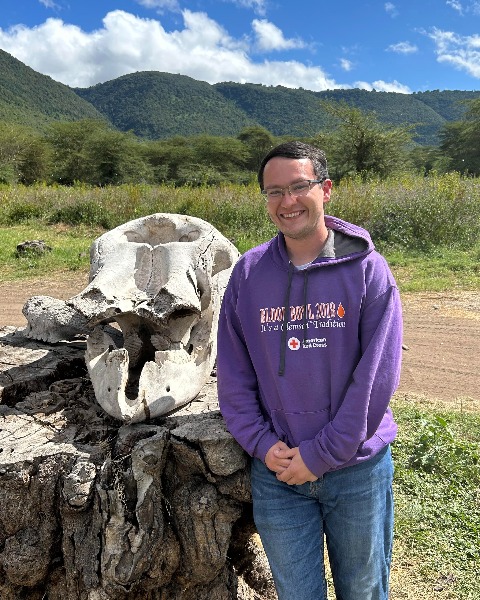Neural Engineering
(J-390) Biomarkers for Parkinson’s Disease: Suitability of self-collected saliva for disease progression monitoring.
- MZ
Mo Zheng (he/him/his)
High School Student
Clemson University
Raleigh, North Carolina, United States - SS
Sujata Srikanth
Clinical Supervisor
Clemson University REDDI Lab, United States 
Jeremiah W. Carpenter (he/him/his)
Graduate Research Assistant
Clemson University
Central, South Carolina, United States- DD
Delphine Dean, PhD (she/her/hers)
Professor and Chair
Department of Bioengineering, Clemson University, United States
Presenting Author(s)
Co-Author(s)
Primary Investigator(s)
Parkinson’s disease (PD) is a progressive brain disorder caused by degeneration of the nerve cells in the substantia nigra, which controls movement leading to uncontrollable movements and motor impairments. The shaking, stiffness, decreased coordination and balance eventually, leads to difficulty in speech and inability to walk (1). PD is the second most common neurodegenerative disease with vast clinical heterogeneity and complexity, making it difficult to diagnose due to its insidious onset. Currently there are no suitable biochemical markers for diagnosis and progression monitoring (2).
Brain cells of most people with PD contain Lewy bodies constituted by clumps of the alpha-synuclein (α-syn) making it a pathological hallmark. As a major component of Lewy bodies, α-syn has been investigated as a potential PD biomarker, since it is present in biofluids like cerebrospinal fluid (CSF), plasma, and saliva (3). Studies are underway to better understand the functions of alpha-synuclein and its relationship to genetic variants impacting PD. Cortisol levels are also discriminatory in PD diagnosis with higher salivary cortisol levels are also seen in PD.
Saliva is an attractive biofluid due to its accessibility and homogeneity and early studies indicate salivary α-synuclein and cortisol could be used together as biomarkers for PD in diagnosis and monitoring of disease progression (4). Here we evaluate the usability of salivary a-synuclein and cortisol ELISA assays for real-world use. We hope to determine if these markers are stable enough in saliva with standard storage and transport conditions to allow for self-collection.
Materials and Methods::
Saliva was self-collected from participants between 9:00 am and 11:00 am to control for the effects of circadian rhythm (Clemson IRB 2021-0703). To assess the stability of samples, we tested saliva storage under conditions simulating situations of home collection and transport. These include fresh, overnight at room temperature (RT), overnight at 4°C, frozen at -20°C, and frozen at -20°C with 1-2 freeze thaw cycles.
Samples are assayed by ELISA for levels of α-synuclein and cortisol. Effect of storage and transport variables will be evaluated to decide upon the best conditions to be used in real-life situations.
Results, Conclusions, and Discussions::
Our results (Figure 1) show that commercial ELISA assays for cortisol and a-synuclein can be used to quantify the markers in saliva. The salivary matrix did not affect the ELISA results in any of trials with either pooled or single patient samples. While the storage condition testing for α-synuclein is still ongoing, the preliminary results show that cortisol levels in saliva are stable after overnight storage at room temperature or when stored in frozen conditions with 1-2 freeze thaw cycles. This is consistent with prior studies on cortisol testing in saliva. Since α-synuclein levels can vary by patient, for the stability testing, we will be spiking pooled saliva samples with recombinant α-synuclein and then running the storage conditions testing.
Senior citizens and elders in assisted facilities are a vulnerable, high-risk population for Parkinson’s disease. This group is also one where self-collection of saliva samples is most appropriate. Our experience with COVID-19 sample self-collection in the assisted-living facility setting has been largely successful (5). With samples being self-collected, caregivers are involved only in physically taking the samples and transporting them to the testing facility. In this realm it is essential to ensure that sample quality is retained for analysis and there is no degradation or loss of the biomarkers during storage and transport.
Acknowledgements (Optional): : This research was partially supported by the Ron and Jane Lindsay Family Innovation Professorship and the Clemson REDDI Lab.
References (Optional): : 1) American Association of Neurological Surgeons (AANS), https://www.aans.org/en/Patients/Neurosurgical-Conditions-and-Treatments/Parkinsons-Disease, 2023
2) National Institute of Neurological Disorders and Stroke (NINDS), https://www.ninds.nih.gov/current-research/focus-disorders/focus-parkinsons-disease-research/parkinsons-disease-challenges-progress-and-promise, 2023
3) Katayama T, Sawada J, Takahashi K, Yahara O. Cerebrospinal Fluid Biomarkers in Parkinson's Disease: A Critical Overview of the Literature and Meta-Analyses. Brain Sci. 10(7):466, 2020. doi: 10.3390/brainsci10070466.
4) Kang, W., Chen, W., Yang, Q. et al. Salivary total α-synuclein, oligomeric α-synuclein and SNCA variants in Parkinson’s disease patients. Sci Rep 6, 28143, 2016. https://doi.org/10.1038/srep28143
5) Plumb, EV, Ham, RE, Napolitano, JM, King, KL, Swann, TJ, Kalbaugh, CA, Rennert, L, Dean, D, Implementation of a Rural Community Diagnostic Testing Strategy for SARS-CoV-2 in Upstate South Carolina, Front. Public Health, 10, 2022, doi.org/10.3389/fpubh.2022.858421
